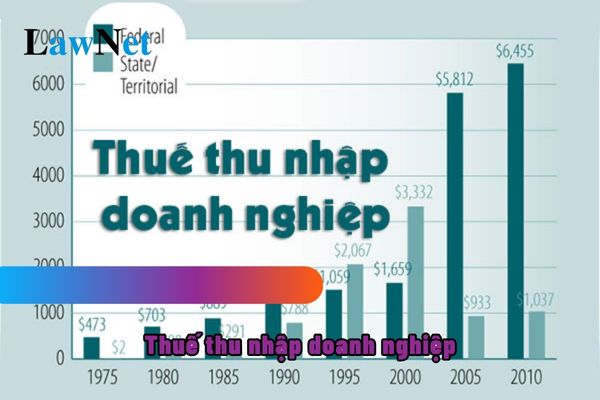Vietnam: Does the company providing installation of magnetic card lock systems, receiving 60 percent upfront payment, record this in taxable corporate income?
Vietnam: Does the company providing installation of magnetic card lock systems, receiving 60 percent upfront payment, record this in taxable corporate income?
Based on the provisions at Clause 2 Article 5 of Circular 78/2014/TT-BTC, as amended by Article 3 of Circular 96/2015/TT-BTC as follows:
Turnover
1. Turnover for calculating taxable income is determined as follows:
Turnover for calculating taxable income is the total of all proceeds from selling goods, processing work, or providing services, including subsidies, surcharges, and additional charges the enterprise receives, regardless of whether the money has been collected.
a) For enterprises paying value-added tax (VAT) by the deduction method, the turnover does not include VAT.
Example 4: Enterprise A is subject to VAT by the deduction method. The VAT invoice includes the following indicators:
Selling price: 100,000 VND.
VAT (10%): 10,000 VND.
Payable amount: 110,000 VND.
Turnover for calculating taxable income is 100,000 VND.
b) For enterprises paying VAT by the direct method on the added value, the turnover includes VAT.
Example 5: Enterprise B is subject to VAT by the direct method on the added value. The sales invoice only states the selling price as 110,000 VND (including VAT).
Turnover for calculating taxable income is 110,000 VND.
c) In cases where enterprises have service business activities for which customers pay in advance for several years, the turnover for calculating taxable income is allocated to the number of pre-paid years or determined according to the one-time payment turnover. In case the enterprise is enjoying tax incentives, the determination of the incentivized tax amount must be based on the total corporate income tax payable for the pre-paid years divided (:) by the pre-paid years.
2. The time of determining turnover for calculating taxable income is defined as follows:
a) For goods sales activities, it is the time of transferring the ownership or usage rights of goods to the buyer.
b) For service provision activities, it is the time of completing the provision of services or completing each phase of the service provision for the buyer except as stated at Clause 3 Article 5 of Circular 78/2014/TT-BTC, Clause 1 Article 6 of Circular 119/2014/TT-BTC.
c) For air transport activities, it is the time of completing the transport service provision for the buyer.
d) Other cases as prescribed by law.
...
Thus, according to the above regulation, the company providing installation of magnetic card lock systems which receives 60 percent upfront payment without installation (meaning not yet completed) will not be recorded in the taxable corporate income.

Vietnam: Does the company providing installation of magnetic card lock systems, receiving 60 percent upfront payment, record this in taxable corporate income? (Image from Internet)
Is the corporate income tax period determined according to the Gregorian calendar or lunar calendar in Vietnam?
Pursuant to Article 6 of the Corporate Income Tax Law 2008 the calculation of corporate income tax is based on taxable income and tax rates.
In addition, according to the guidance at Article 5 of Decree 218/2013/ND-CP implementing the Corporate Income Tax Law 2008 states that:
Tax base is taxable income in the period and tax rates.
The tax period is implemented according to the provisions at Article 5 of the Corporate Income Tax Law 2008 and tax management law regulations.
Referencing Article 5 of the Corporate Income Tax Law 2008 which stipulates the tax periods include:
(1) Corporate income tax period is determined according to the calendar year or financial year, except for case (2).
(2) The corporate income tax period for each time income arises applies to foreign enterprises as specified at points c and d, clause 2, Article 2 of the Corporate Income Tax Law 2008.
*Note: Enterprises can choose the tax period according to the calendar year or financial year but must notify the tax agency before implementation.
Thus, according to the above regulations, the corporate income tax period is determined according to the calendar year.
What are regulations on determining taxable income as a basis for corporate income tax calculation in Vietnam?
Pursuant to Article 7 of the Corporate Income Tax Law 2008 (amended and supplemented by Clause 4 Article 1 of the Amended Corporate Income Tax Law 2013) and Article 6 of Decree 218/2013/ND-CP guiding the determination of taxable income specifically as follows:
(1) Taxable income in the tax period is determined by taxable income minus tax-exempt income and losses carried forward from previous years.
Taxable income in the tax period is determined as follows:
| Taxable Income | = | Taxable Income | - | (Tax-exempt Income | + | Losses carried forward as stipulated) |
(2) Taxable income equals turnover minus deductible expenses of production and business operations plus other incomes, including incomes earned outside Vietnam.
Taxable income is determined as follows:
| Taxable Income | = | (Turnover | - | Deductible Expenses) | + | Other Income |
- Enterprises with multiple business activities will have taxable income from production and business operations as the sum of income from all business activities.
- In cases of loss in a business activity, the loss can be offset against taxable income from other profitable business activities as chosen by the enterprise. The remaining income after offsetting will be subject to the corporate income tax rate applicable to the profitable business activity.
- Income from real estate transfer, investment project transfer, investment participation rights transfer, exploration, extraction and processing of minerals transfer must be separately declared for tax purposes.
- In cases of losses from transferring investment participation rights, investment projects (except exploration and exploitation mineral projects), and real estate transfers, these losses can be offset against profits from production and business operations within the tax period.
- If the enterprise is in dissolution procedures and sells real estate which is fixed assets, income from real estate transfer (if any) is offset against income from the enterprise's production and business activities.

